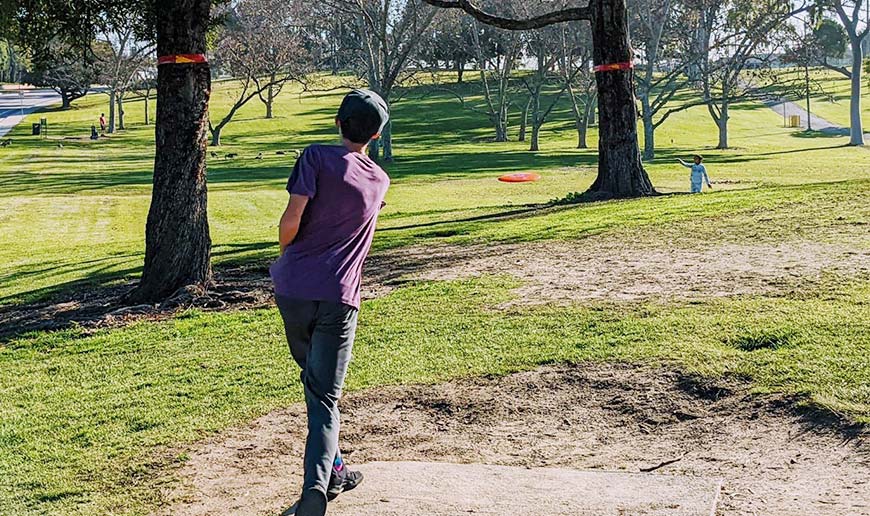There are two terms used to describe the flight of a disc that come up quite often. Those are “overstable” and “understable”. Here is a brief description of the two words, and how you can use that information.
In talking about the flight of the disc, I will describe the flight as if the disc was thrown by a right-handed player throwing backhand. A left-handed player throwing backhand would have the opposite flight.
Generally speaking, when a disc leaves the hand, it is travelling at the fastest speed of the flight, and because of the physics of the disc it has a tendency to turn to the right. As the disc slows down, it has a tendency to fade to the left. How much the disc moves right or left depends on the disc and the speed that it is thrown. With that in mind, let’s look at the two terms mentioned above.
Understable Discs

Understable – A disc that turns significantly to the right when thrown flat is considered to be “understable”. With the four-number flight rating system commonly used in disc golf, the third number is the one that will tell you if a mold is understable. (A description of the four-number flight rating system can be found here) The more negative the turn number, the further to the right the disc will turn. Also, the faster you throw a disc, the more it turns to the right.
As mentioned in the article about flight numbers, the use of flight numbers is not an exact science. There are some molds whose flight numbers indicate that it should have a lot of turn, but because of the weight, plastic, and condition of the disc, it may not fly like the numbers say it should. Also, the disc must be thrown at a speed that will allow the disc to fly like it should. Newer players may not have the skill to achieve the necessary speed.
You may hear the term “flippy” to describe an understable disc.
Overstable Discs

Overstable – A disc that fades hard to the left at the end of its flight is considered “overstable”. Referring again to the flight numbers, the last number will indicate how overstable a disc is. The higher the fourth number, the more overstable. Discs that are overstable are called ‘beefy’ or ‘meat hooks’.
Molds that are very overstable usually have little or no turn, making them great for players who can throw fast. However, very overstable discs are usually not necessary for beginners. As people develop the skill to achieve higher speed throws, the overstable disc is a great tool in your bag.
Headwind and Tailwind
It is important to understand how the wind affects the stability of a disc. Since we know that the faster a disc flies, the more understable it becomes, we can use that to help us visualize what the wind does to the disc.
Let’s say that we are throwing the disc 45 MPH and there is a 20 MPH headwind. The disc will then behave like it would if you threw it 65 MPH on a calm day. It will become more understable and turn more to the right. You would want a more overstable disc to account for the wind.
The opposite is true with a tailwind. The disc would then behave as if you threw is 25 MPH, making it much more overstable. In a tailwind, a slightly more understable disc would work better for you.
Sometimes players can’t get a good wind read and their disc behaves in a surprising way. Then when they get out in the fairway they can feel a breeze that accounts for the surprising flight.

